Working with the JTreeWithScrollbar example, but scaled it back significantly to focus on the issue.
The original code would have the vertical scrollbars appear as needed.
Here, there is plenty of space and no scrollbars are needed.
If the panel is moved enough, the scrollbar will appear.
Once the following line of code was added, the scrollbars stopped appearing.
tree.setUI(new MyTreeUI());
Notice no scrollbar.
If the above line of code is commented out, the vertical scrollbar appears.
Checking the documentation for BasicTreeUI and there isn't anything related to showing/hiding scrollbars.
2 Questions
1 - When utilizing the BasicTreeUI object, what is required to ensure the scrollbars still function?
2 - Why is it the Horizontal scrollbar never appears even if the line of code is commented out?
import javax.swing.JEditorPane;
import javax.swing.JFrame;
import javax.swing.JPanel;
import javax.swing.JScrollPane;
import javax.swing.JSplitPane;
import javax.swing.JTree;
import javax.swing.plaf.basic.BasicTreeUI;
import javax.swing.tree.DefaultMutableTreeNode;
import java.awt.Dimension;
public class JTreeWithScrollbar extends JPanel {
private JEditorPane htmlPane;
private JTree tree;
public JTreeWithScrollbar()
{
//Create the nodes.
DefaultMutableTreeNode top = new DefaultMutableTreeNode("The Java Series");
DefaultMutableTreeNode book1Node = new DefaultMutableTreeNode("Book 1");
DefaultMutableTreeNode book2Node = new DefaultMutableTreeNode("Book 2");
top.add(book1Node);
top.add(book2Node);
tree = new JTree(top);
tree.setUI(new MyTreeUI()); ///Comment out this line of code and the vertical scrollbar appears.
JScrollPane treeView = new JScrollPane(tree);
JScrollPane htmlView = new JScrollPane(htmlPane);
JSplitPane splitPane = new JSplitPane(JSplitPane.VERTICAL_SPLIT);
splitPane.setTopComponent(treeView);
splitPane.setBottomComponent(htmlView);
Dimension minimumSize = new Dimension(100, 50);
htmlView.setMinimumSize(minimumSize);
splitPane.setDividerLocation(100);
splitPane.setPreferredSize(new Dimension(500, 300));
add(splitPane);
}
public static void main(String[] args)
{
//Create and set up the window.
JFrame frame = new JFrame("TreeDemo");
frame.setDefaultCloseOperation(JFrame.EXIT_ON_CLOSE);
JPanel jp = new JPanel();
jp.add(new JTreeWithScrollbar());
frame.add(jp);
//Display the window.
frame.pack();
frame.setVisible(true);
}
private static class MyTreeUI extends BasicTreeUI
{
public MyTreeUI()
{
super();
}
@Override
protected void updateCachedPreferredSize() {
treeState.invalidateSizes();
tree.treeDidChange();
}
}
}



